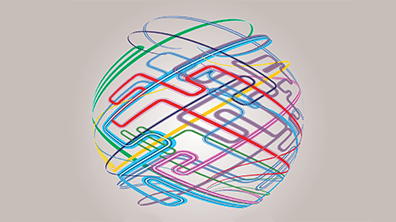Generative artificial intelligence (Gen-AI) is far more creative and agile than so-called ‘traditional’ AI. It has vastly greater analytical powers, is much more intuitive and can take one type of content and turn it into another, for example by converting a chunk of text into an image.
In a recent report, the International Monetary Fund noted that Gen-AI will accelerate AI adoption in finance, thanks to its ability to process very large and diverse datasets, and to generate content in accessible, easily usable formats.
What gen-AI means for the wider finance function
Boston Consulting Group (BCG) points out that, in finance, traditional AI and Gen-AI have both separate and combined uses.
In its own corner, traditional AI can handle tasks such as reconciliation, anomaly and fraud detection, credit scoring, compliance and spend category analysis.
Together, the two AIs can serve as recommendation engines, while providing tools for demand forecasting, audit risk detection and data-related insights.
Where Gen-AI really shows its strength is in writing-based tasks, such as contracts and investor communications, plus generating long-term financial scenarios, automated reports, business intelligence and strategic insights.
BCG expects to see a gradual increase in the number of AI-driven ‘copilots’ or ‘assistants’ used by practitioners. Copilots, according to BCG, could transform core processes in areas such as contract drafting and invoice processing. They could also boost the finance function’s support for other parts of the business by producing higher quality data. And they could enhance risk management by predicting and explaining anomalies.
What gen-AI means for accountancy
In a report in June last year, Thomson Reuters described Gen-AI as “disconcertingly competent”. Leading platform ChatGPT, it noted, has been trained in the US tax code and can therefore answer complex tax questions in a matter of seconds. With that in mind, the report said, accounting and auditing are among the vocations that many pundits and experts predict will be affected, disrupted and possibly transformed by Gen-AI.
In December, further research from Thomson Reuters cited some use cases that are already taking off among early adopters in accountancy:
Structured data extraction Professionals can submit a PDF of hard data into ChatGPT and it will convert the file into a comma-separated values file that is easier to read and work with.
KPI analysis By crunching large volumes of company data, Gen-AI can pull out patterns, trends and insights that give accountancy firm leaders a better grasp of their clients’ performance.
Hiring Steered by certain criteria, Gen-AI can look for candidates for open posts at a firm, eliminating needless cost and time.
Meanwhile, BCG’s research highlights a case study of an accountant using Gen-AI to review general ledger entries. In that process, the software flagged up 10 entries. Taking a closer look at those entries, the accountant found that five of them had been posted to the wrong expense accounts.
What are the drawbacks and risks?
In its current form, Gen-AI is not a silver bullet, or cure for all ills. While it can spot potential risks, it may also present them.
In a report in November last year, industry body UK Finance highlighted the give and take of AI’s growing powers. Predictive AI models, it said, are tuned to be accurate and predictable in their outputs, but lack gen-AI’s creativity. However, many Gen-AI systems lack ‘explainability’: the extent to which a model’s workings, and the reasons behind its outputs, can be understood.
The report stressed that Gen-AI models are “particularly opaque”, making it a challenge to identify the root cause of errors or predict potential mistakes. Gen-AI, it warned, “is optimised to generate probable or realistic-sounding answers rather than providing a calculated ‘right’ answer. As a result, the accuracy of the generated answer is uncertain”.
With that in mind, technology and protocols need to establish “secure ranges of confidence and ensure safe use”.
Then there’s another big question: how can these sprawling, new global platforms with high adoption rates guarantee the safety of users’ data? In a blog last August, authors writing for Gen-AI engagement tool gupshup broke this issue down into four parts:
- Data security Safeguards against unauthorised access and cyber threats.
- Data privacy How users’ data is collected, used and shared.
- Data residency Specific, physical locations where data is stored.
- Data sovereignty National laws that govern key aspects of residency.
With key world regions taking very different legal approaches to data, there are a range of challenges around user confidence that need to be addressed.
ICAEW Data Analytics and Tech Manager Bani Lamba says: “While Gen-AI may seem intuitive and creative, and its outputs may appear to stem from certain human traits, it’s important not to anthropomorphise these tools and treat them as self-aware. In the end, their functions only simulate aspects of human creativity – and it’s in that context we should consider both their scope for automating parts of the finance function and the uncertain nature of some of their outputs, as experts have noted.”
Learn more from ICAEW
For a deeper dive into this topic, visit icaew.com/genai.
ICAEW's Generative AI Guide
Getting to grips with Gen AI
ICAEW's GenAI Accelerator Programme is a suite of elearning courses to provide you with the skills to harness the power of GenAI, transforming the way you work and positioning yourself as a leader in the industry.




